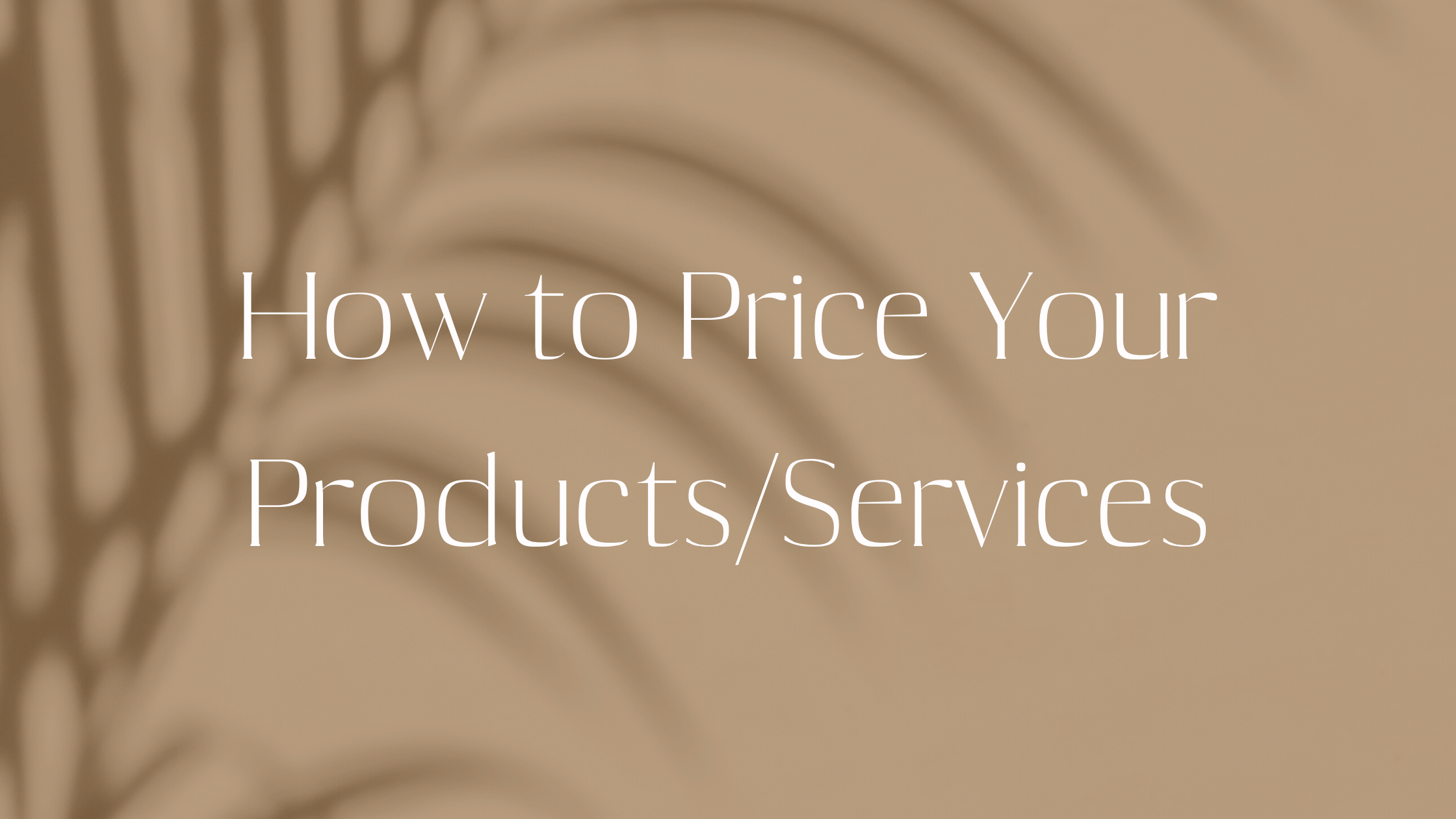How to Price Your Products/Services
As a busy female entrepreneur, one of the most important things to do is correctly price your products or services. Correctly priced products can maximize profits and give owners and managers insight into how the business is performing against past results and current competitors. In this article, we will discuss several methods to correctly price your products.
Price Inputs
A good place to start when determining how to price your products or services is with the inputs that go into determining price. For manufacturing companies, the relevant inputs are direct labor, direct materials, and manufacturing overhead.
Service providers will use similar inputs, but will be much more labor intensive. Let’s discuss each input in more detail.
Direct Materials
The direct materials input refers to the raw materials used to manufacture a company’s product that can be directly traced to that product.
For example, suppose you are a female entrepreneur who runs a custom furniture manufacturer. The wood, screws, and other materials used to create each piece are considered direct materials.
You may be wondering what happens to difficult to trace materials such as staining and glue. These are classified as indirect materials and are often included in overhead.
Direct Labor
Direct labor refers to the amount of labor, usually measured in hours, used to create a product or perform a service. The hours used to create each piece of furniture for the company discussed above constitute direct labor hours, and are a major factor when determining how to price your products.
Overhead
Overhead includes all costs that are difficult to trace to each product but are necessary to produce your company’s products or services. Common examples of overhead include rent, utilities, indirect materials, and salaries.
Because measuring overhead expenses can be difficult, companies often use a predetermined overhead rate based on labor hours to calculate how much overhead to apply to a job.
For example, your furniture company decides to apply $3.00 in overhead for each labor hour worked. So if your product or service requires 10 hours to complete, $30 in overhead will be applied to this product.
Using the “Cost Plus” Method
The cost plus method is a simple method you can use to price your products or services. To use the cost plus method, add the total cost used to produce your product and add a markup amount
For example, your custom furniture business uses a total of $500 in costs to produce a piece. You have decided that a 10% markup is the best way to maximize profits, so you set a price of $550 for this piece of furniture.
You can see how straightforward the cost-plus method is, which is a major reason it is extremely popular with many business owners.
You May Also Like:
What's Your Profit Margin & How to Compare it With Your Industry
Competitive Pricing
Another popular method for how to price your products is by looking at what your competitors are charging and using a similar price. This is more useful in industries with many competitors, as there is a wealth of price data available.
By using competitive pricing, you can adjust your company’s pricing up or down depending on both competitors and market performance.
Value Based Pricing
Value Based pricing is like competitive pricing with a twist. The basis of value based pricing is to quantify the value added to a product or service your company provides, and add this to your cost.
For example, suppose your furniture business excels at speedy delivery and exceptional customer service. These are two inputs that give extra value to the customer, and allows you to ask for a higher price.
It can be difficult to quantify how much these value added features are worth, but asking for feedback from customers or competitors who also offer similar value added services can help.
Penetration Pricing
Penetration pricing is popular with companies that are looking to enter a new and competitive market. Penetration pricing involves lowering your price below the competition to grow market share for your product or service.
For example, instead of a custom furniture business, suppose you are a female entrepreneur who wants to provide pet grooming services. Pet grooming is a competitive industry, and the average price for grooming is $50 per pet.
You decide to initially charge $35 per pet in order to “penetrate” the pet grooming market. You may be able to raise prices to better match the competition once you have a stable customer base.
With penetration pricing, it is important to keep your actual costs in mind. Pricing your product or services below cost can cause your company to encounter financial difficulties quickly.
We hope this discussion about product pricing and how to price your products and services has been helpful. Keep in mind that you can always transition from one pricing system to another as your company’s needs change.
For more information on how we can help with pricing and other aspects of business, check out the rest of the Tatum Accounting website!

